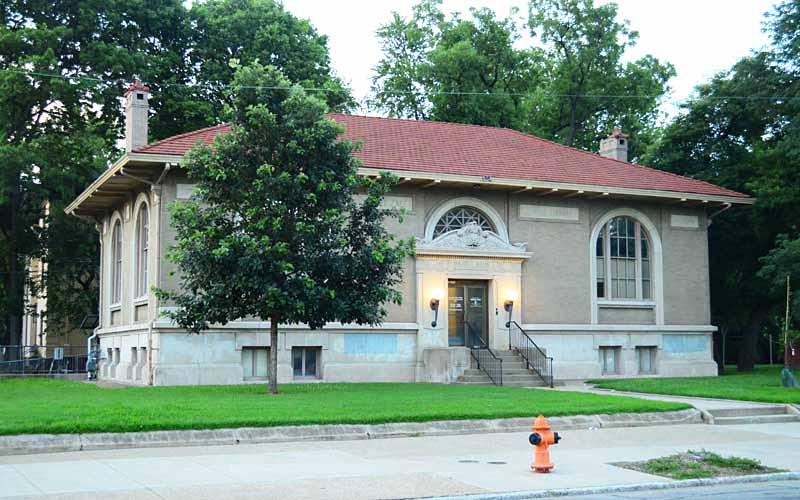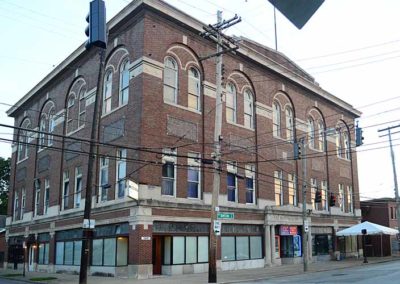Parkland

The Parkland Business Preservation District was developed as the commercial hub for another one of the city’s early suburbs. In 1871, over a thousand lots were auctioned off and by the 1880s the new street grid and mule-drawn streetcars had given the area an urban character. Elegant mansions were built by affluent whites who ran the city and regulated the types of businesses allowed there to make it a more desirable place to live.
On March 27, 1890 one of the most powerful tornados in Jefferson County destroyed most of Parkland’s buildings, to survived the town agreed to be annexed by Louisville in 1894 and the area was rebuilt and expanded.
A section of the neighborhood just southwest of central Parkland was known as Little Africa, and like the other all-black neighborhoods in the city, Smoketown and California, most families lived in wooden shacks and shanties. By the early twentieth century opportunities and improvements had created better living conditions for the residents there.
By the 1950s the business district had expanded and featured everything young post World War II suburbanites needed, gas stations, department stores, a grocery, theaters, bakeries, hardware stores, a bank, and a record store.
On May 28, 1968, disaster struck again when African American civil rights activists started raced riots and Parklands’s stores were vandalized. Residents, business developers, and city officials have tried to revitalize the business district, which is surrounded by a National Register District of over four hundred residences.
Its boundaries are W. Broadway on the north, 26th St. on the east, Woodland Ave. on the south, and 34th St. on the west.
